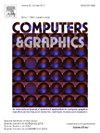dualphysics - gs:用于水下场景重建的双物理引导3D高斯喷溅
IF 2.8
4区 计算机科学
Q2 COMPUTER SCIENCE, SOFTWARE ENGINEERING
引用次数: 0
摘要
在水下场景的三维重建中,传统的基于大气光学模型的方法无法有效处理水介质特有的光波长选择性衰减和悬浮粒子散射效应,导致远距离的颜色失真、几何伪影和塌缩现象。我们提出了dualphysics - gs框架,通过双路径优化机制实现高质量的水下重建。我们的方法进一步发展了一种双特征引导的衰减散射建模机制,RGB引导的衰减优化模型结合了RGB特征和深度信息,可以处理边缘和结构细节。相比之下,多尺度深度感知散射模型利用特征金字塔网络和注意机制捕捉不同尺度下的散射效应。同时,我们设计了几个特殊的损失函数。衰减散射一致性损失保证了物理一致性。水体类型自适应损失动态调整权重系数。利用边缘感知散射损耗来保持结构边缘的清晰度。多尺度特征损失有助于捕获全局和局部结构信息。此外,我们设计了一种场景自适应机制,可以自动识别水体类型特征(如清澈的珊瑚礁水域或浑浊的沿海水域),并动态调整散射和衰减参数和优化策略。实验结果表明,该方法在多个指标上都优于现有方法,特别是在悬浮物质密集区域和远距离场景下,重构质量显著提高。本文章由计算机程序翻译,如有差异,请以英文原文为准。

DualPhys-GS: Dual physically-guided 3D Gaussian splatting for underwater scene reconstruction
In 3D reconstruction of underwater scenes, traditional methods based on atmospheric optical models cannot effectively deal with the selective attenuation of light wavelengths and the effect of suspended particle scattering, which are unique to the water medium, and lead to color distortion, geometric artifacts, and collapsing phenomena at long distances. We propose the DualPhys-GS framework to achieve high-quality underwater reconstruction through a dual-path optimization mechanism. Our approach further develops a dual feature-guided attenuation-scattering modeling mechanism, the RGB-guided attenuation optimization model combines RGB features and depth information and can handle edge and structural details. In contrast, the multi-scale depth-aware scattering model captures scattering effects at different scales using a feature pyramid network and an attention mechanism. Meanwhile, we design several special loss functions. The attenuation scattering consistency loss ensures physical consistency. The water body type adaptive loss dynamically adjusts the weighting coefficients. The edge-aware scattering loss is used to maintain the sharpness of structural edges. The multi-scale feature loss helps to capture global and local structural information. In addition, we design a scene adaptive mechanism that can automatically identify the water-body-type characteristics (e.g., clear coral reef waters or turbid coastal waters) and dynamically adjust the scattering and attenuation parameters and optimization strategies. Experimental results show that our method outperforms existing methods in several metrics, especially in suspended matter-dense regions and long-distance scenes, and the reconstruction quality is significantly improved.
求助全文
通过发布文献求助,成功后即可免费获取论文全文。
去求助
来源期刊

Computers & Graphics-Uk
工程技术-计算机:软件工程
CiteScore
5.30
自引率
12.00%
发文量
173
审稿时长
38 days
期刊介绍:
Computers & Graphics is dedicated to disseminate information on research and applications of computer graphics (CG) techniques. The journal encourages articles on:
1. Research and applications of interactive computer graphics. We are particularly interested in novel interaction techniques and applications of CG to problem domains.
2. State-of-the-art papers on late-breaking, cutting-edge research on CG.
3. Information on innovative uses of graphics principles and technologies.
4. Tutorial papers on both teaching CG principles and innovative uses of CG in education.
 求助内容:
求助内容: 应助结果提醒方式:
应助结果提醒方式:


